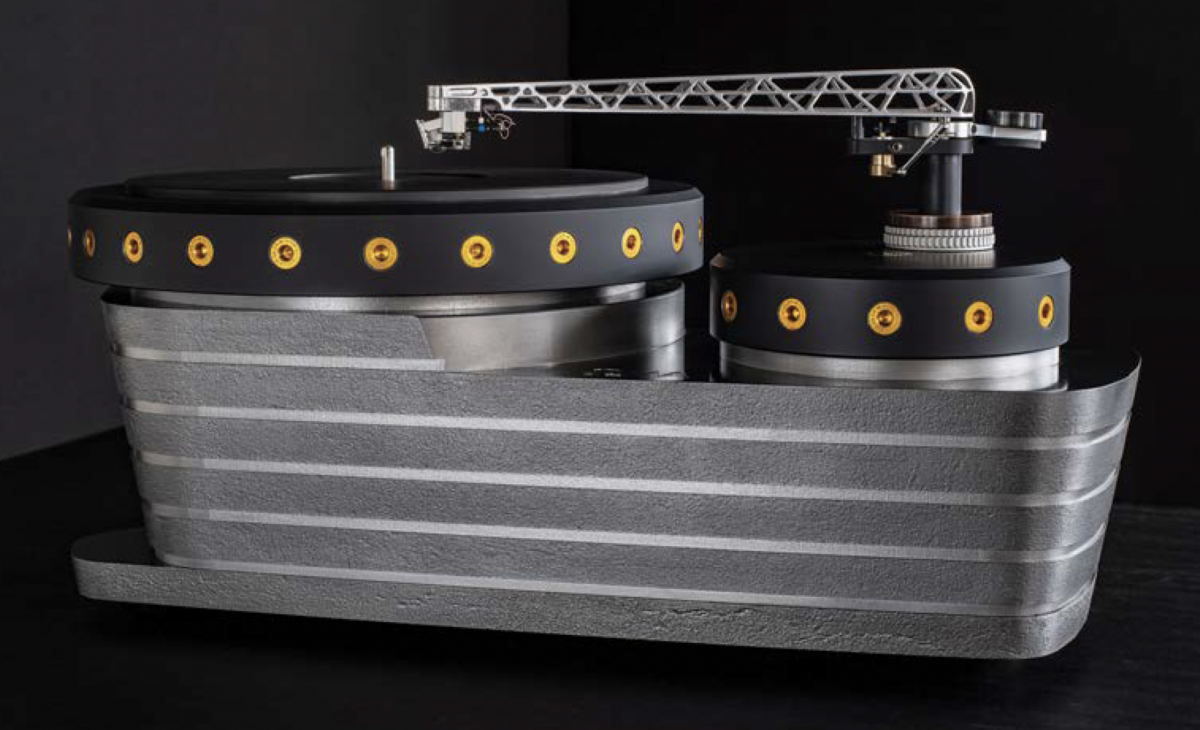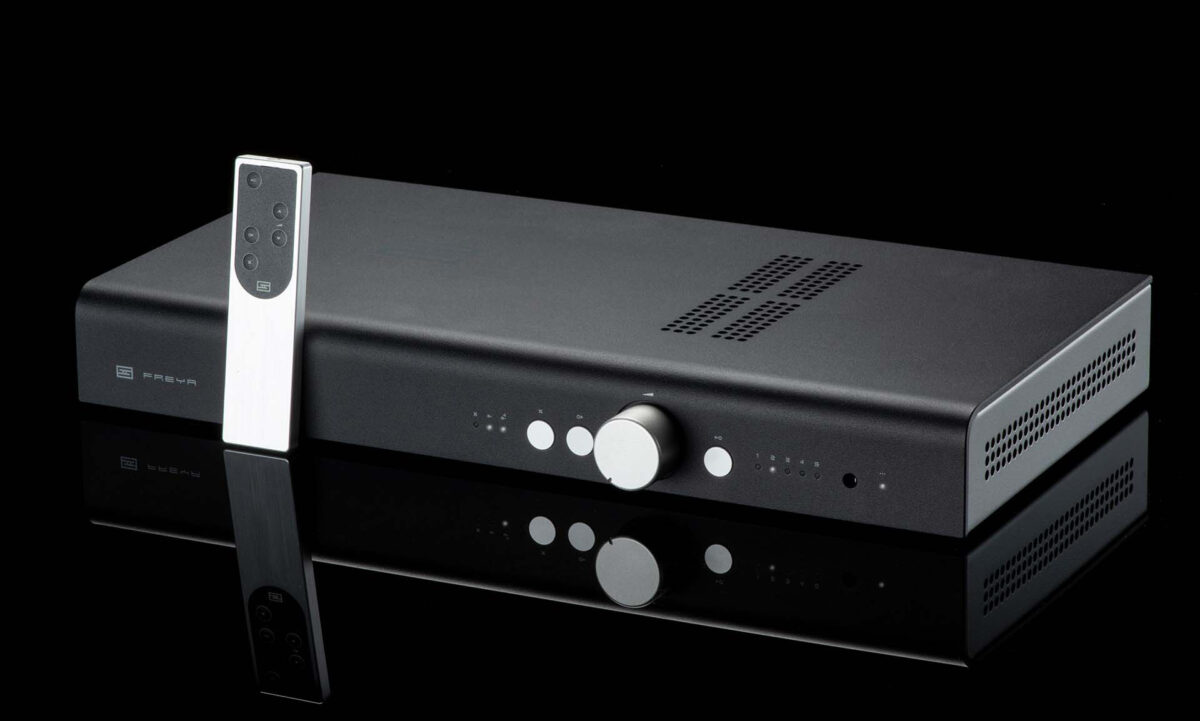
When the NuPrime IDA-8 integrated amplifier first arrived at my home, I immediately had a good feeling about it. Initially, that positive impression was based on its packaging. The outer shipping box the amp came in was not any larger than it needed to be, and inside was a smaller box with a plastic carrying handle on top—almost like a little briefcase. More than just a cute or superficial add-on, it represented smart design for those who would be handling the amp—from the distributors to end-users. It also came in handy because I needed to repack the amp before moving house a couple of months ago.
As I’m a relative newbie to the hi-fi scene (though I was raised in an audiophile household) and a fan of great design in all its forms, I appreciate this kind of attention to detail. But the real point here is that those outer elements reflect the care and thoughtfulness that went into the IDA-8’s design on the inside.
First, a bit about NuPrime’s heritage. Its recent history is slightly complicated, so I’m going to borrow a couple of key points from Steven Stone’s review of NuPrime’s DAC-10H DAC/pre and ST-10 power amp (Issue 255). In 2014, NuForce’s cofounder, Jason Lim, with backing from the OEM factory, bought the assets of NuForce’s high-end division, obtained the rights to NuForce technologies, and formed NuPrime Audio, Inc. (Shortly thereafter the NuForce company was sold to Optoma.)

Since NuPrime’s founding, Lim has continually sought to improve sonics through the application of innovative technologies—in addition to offering high performance and value with respect to pricing. The IDA-8 exemplifies this approach. Here’s how Lim summarizes the IDA-8, “It is as if we combined the ‘perfect’ ST-10 and DAC-10H, made it sound like a high-end Class A amp, and brought the price down to $995.”
Sonically and functionally, there’s plenty to love about the IDA-8. Essentially, it’s a sleek-looking, small-footprint hybrid Class A/Class D integrated amplifier/DAC—that combines Class A warmth and resolution with Class D speed, power, and efficiency, and delivers both with remarkably low noise, thanks in part to ultra-low-noise JFETs in its input stage. Its DAC supports USB 384kHz/32-bit and DSD256, and is also capable of decoding DoP (DSD over PCM) via coaxial and optical inputs. NuPrime’s SRC (sampling rate conversion) IC chip provides FPGA processing with ultra-low jitter and distortion.
There’s also a wireless port (for which an optional dongle is available) in addition to an impressive array of inputs and outs (especially given its rather diminutive dimensions) that allows users a great deal of functional flexibility. The IDA-8 is remarkably user-friendly to boot. The best part? Not only does it work and sound great, but this petite, yet powerful amp is also a stone-cold bargain at $995.
Smart Design, Inside and Out
Let’s take a closer look at the IDA-8’s internal and external design elements and technologies. On the outside, its relatively minimalist yet modern form factor is clean, sleek, and nearly square in width and depth, and, like its box, appears to have been designed to be only as large as it needs to be. Neither too dinky nor too clunky, its scale seems suitable for almost any size listening room (even one in a small apartment). You won’t need much space for this powerful little integrated (so you can go ahead and buy those bigger loudspeakers!). Available finishes include matte black (as with my review sample) or silver anodized aluminum. To provide extra damping to absorb vibration, the amp boasts unique, patent-pending isolation feet shaped a bit like shallow inverted cones.
Elegant in its simplicity, the IDA-8’s front panel has only two knobs, each of which is multi-functional, as well as an alphanumeric LED display in blue. The knob on the right serves as a push-button to power on and off and, when pressed for three seconds, to access standby mode (which consumes very low power); when turned, it allows for five input selections (shown in codes): coaxial (C1), optical (O2), USB (U3), extension port for Bluetooth dongle or WiFi module (E4), and stereo analog RCA (A5). The left knob controls the volume functions; turning it adjusts the volume in 99 precise 0.5dB increments, and a brief press mutes and unmutes the sound. The volume control consists of an advanced, thin-film switched-resistor ladder network, with only a single resistor in the signal path at any volume setting. (This switched resistor design is implemented with an FPGA chip.) Each input features individually adjustable volume to allow for precise level-matching across various sources. In addition to the inputs mentioned, the back panel also has subwoofer and stereo speaker outputs, a slow-blow AC fuse, and an IEC power plug, plus a rather tiny toggle switch to turn the unit off and on. On the bottom of the chassis is an AC inlet voltage selector with options for 115V or 230V for use in different countries (it arrives set at 230V to prevent accidental damage). The IDA-8 comes with a power cord and two petite remote controls that could not be simpler to use—another way NuPrime makes the end user’s life easier. The smaller of the two remotes is tiny—dimensionally littler than a credit card and weighing not much more.
The innovative technologies inside the IDA-8 provide clues to how it achieves such remarkably detailed, powerful, yet musical sound—not to mention very low noise—in such a compact and affordable package. It has an ultra-linear Class A module (ULCAM) in the input (preamplifier) stage—indeed, the entire amp was designed to sound like pure Class A, according to Lim—that uses discrete components to help fine-tune the signal and reduce noise. In the Class D output stage, the sonic issues that plagued early switch-mode designs have been circumvented via the use of a self-oscillating circuit to generate the PWM (pulse width modulation) signal. While most Class D amps switch at a frequency of 300kHz or lower, the IDA-8 switches at 600kHz. This difference helps eliminate old-school Class D tendencies towards bright and/or rolled-off upper octaves and a darker sonic character elsewhere. In addition to a more uniformly colorless tonal balance, this Class D power stage also seems to provide an enhanced sense of speed and transient response.

Setup and Sound
Setup was straightforward. Indeed, The IDA-8 was virtually plug-and-play (break-in time notwithstanding). It’s worth mentioning that the friendly user manual includes a line diagram that illustrates a plethora of possible source options and where they should be connected on the back panel. This is in addition to some technical diagrams showing signal path and amplifier stages. The inclusion of both kinds of illustrations leaves the impression that the IDA-8 is intended for both neophytes and longtime audiophiles. The manual also offers detailed step-by-step instructions for how to set up the IDA-8 for PCM or DSD playback on both Windows and Mac platforms.
Although the IDA-8 is designed primarily for digital sources, I found myself in my usual habit of spinning LPs, though naturally I also did some digital listening too. Interestingly enough, it turns out that I was in effect listening to digital even while listening to analog. Here’s why: The analog input signal gets digitized by an A-to-D. In general, Mr. Lim says the design of IDA-8 maximizes the performance of digital inputs instead of the analog one. But had I not inquired, I might have been none the wiser—nor would I have enjoyed listening to my LPs any less. And I listened to scores of records throughout the review timeframe; the IDA-8 was my go-to amp across a range of musical genres. I became hooked not only by its ear-pleasing, easygoing sound, but also on its ease of use.
How did it sound? In short, beautiful and inviting. I was first struck by its effortlessness, remarkable resolution, and incredibly dark background. This integrated amp sounds much more expensive than it is. Speaking of darkness, I did notice a touch of it in the timbre overall—no doubt in part a factor of the IDA-8’s Class D amplification stage—but it was more apparent on some recordings than others. On the superb Dream with Dean LP reissue from Analogue Productions, Dean Martin’s easygoing baritone took on a touch of slight reediness, almost like a bass clarinet, and a slight sibilance, but it remained well resolved and quite lovely sounding. The bass and guitar followed suit beautifully, demonstrating the IDA-8’s midrange-to-lower-midrange prowess. An impressive degree of detail and soundstaging clarity allowed me to distinguish the various mike setups across the first three cuts on the recording.
Shifting to some more rocking tunes, tracks on the Mobile Fidelity LP reissue of Dire Straits’ Brothers in Arms were reproduced with surprising power and gusto. On “Money for Nothing,” bass and kickdrum had plenty of slam, while Knopfler’s guitar licks pulsed through my speakers (first Raidho D-1s with a pair of JL Audio e110 subs, then later, Monitor Audio Gold 300s, review forthcoming) with exciting dynamics and long decays. The bells on “So Far Away” sounded, well, a touch far away (as in, slightly receded), but the balance of percussion and guitars was crisp, with more than satisfying speed and attack. Class D’s high damping factor is known to benefit the bottom end, but the lower midrange is arguably even more of a strength in the IDA-8.
A listen to Buena Vista Social Club’s Lost and Found, a captivating collection of previously unreleased studio and live tracks, presented thrilling speed, snap, and detail—particularly on the wide range of percussion instruments from cowbell to tablas and beyond. The sharp transient attacks, lifelike vocal layers and vibratos, gorgeous horns, and overall high-octane musical energy made me want to jump out of my seat and dance around the room (OK, I did). The IDA-8 conveyed the music’s richly woven textures as well as its individual parts. Soundstaging was deeper and wider than I expected for an amp in this price category, with precise instrumental placement. Background noise was also shockingly low; the IDA-8 boasts an impressive 95dB signal-to-noise ratio.
Somewhat to my surprise, I found largely similar sonic characteristics when I shifted to digital sources—a MacBook Pro from mid-2012 with 2.3GHz Intel Core i7 processor running OS X 10.9.5 with Audirvana Plus, wireless streaming via Tidal, and even some run-of-the-mill Red Book tracks ripped from CDs way back when via Bluetooth (using the dongle provided). Perhaps the IDA-8’s digital conversion of the analog signal accounts for some of this, but the zeros and ones delivered the great-sounding goods! I still prefer vinyl for most of my critical (and fun) listening, but the IDA-8 brought warmth to its clean and clearly resolved presentation of digital sources too.
In my experience, the downsides to the IDA-8 were few. Upon occasion, the upper treble thinned out a touch, but not much. Can fans might well miss a headphone input option. The only moments I felt something was missing occurred when the sound of the digitally converted analog signal softened ever so slightly due to A-to-D processing; the effect is quite subtle and hard to describe, but once in a while, it seemed some of the raw impact on my LPs was lost. I want to stress that the instances when I noticed this were few and far between and never detracted from my musical enjoyment. Perhaps digital devotees would not register this. The tradeoff here, I would say, is the IDA-8’s consistently lovely and uncannily liquid presentation.
In summary, the IDA-8 is a winner, and a force to be reckoned with in its category (and beyond it). Though a touch dark in character (à la Class D), it delivers substance and warmth with speed, resolution, and plenty of gusto—and does so from an astonishingly quiet background. It has a slightly digital-like sound in its detail resolution but doesn’t cross the line into the overly analytical. A well-conceived Class A/Class D hybrid that doesn’t want for power or clarity, the IDA-8 ought to find itself on the audition short list of a wide range of hi-fi hobbyists, from newbies to more experienced audiophiles. I’m considering purchasing my review sample. Highly recommended.
SPECS & PRICING
Type: Class A/Class D hybrid integrated amplifier
Power output: 100Wpc into 8 ohms, 100Wpc into 4 ohms
Inputs: USB PCM up to 384kHz/DSD up to DSD256; coaxial SPDIF (PCM up to 192k supporting DoP format DSD64); optical SPDIF (PCM up to 192K supporting DoP format DSD64); Bluetooth or WiFi receiver module (optional); analog, stereo RCA (analog input will be digitized)
Outputs: One pair of stereo speaker (binding posts); one pair of stereo RCA (line-level)
Peak output power: 280W
Frequency response: 10Hz–50kHz
THD+N: < 0.005%
SNR ratio: 95dB
Dimensions: 235mm x 55mm (including feet) x 281mm
Weight: 4.3kg
Price: $995
NUPRIME AUDIO
(219) 364-6549
nuprimeaudio.com
ASSOCIATED EQUIPMENT
Loudspeakers: Raidho D-1, Monitor Audio Gold 300
Subwoofer: JL Audio e110 (pair)
Sources: George Merrill GEM Dandy PolyTable with Jelco tonearm and Air Tight PC-7 cartridge; MacBook Pro with 2.3GHz Intel Core i7 processor running OS X 10.9.5 with Audirvana Plus
Phonostage: Walker Audio Procession
Power conditioner: Ansuz
Cables and interconnects: AudioQuest Fire, Shunyata Research Venom series
By Julie Mullins
More articles from this editorRead Next From Review
See all
Oswalds Mill Audio K3 Turntable
- Apr 12, 2024

2023 Golden Ear: Schiit Freya S Preamplifier
- Apr 12, 2024




















